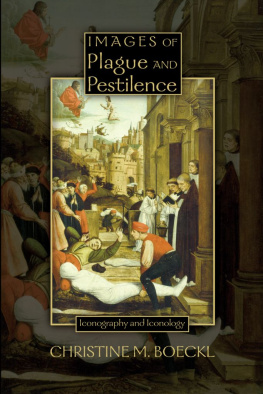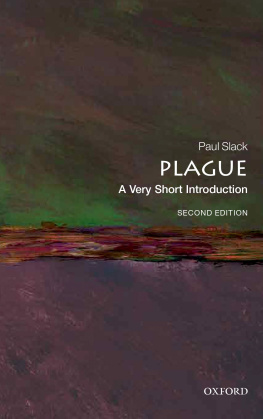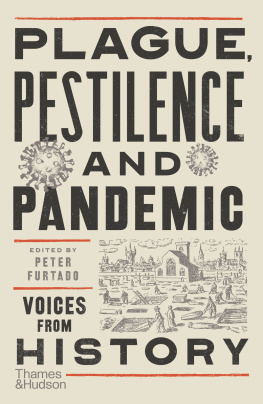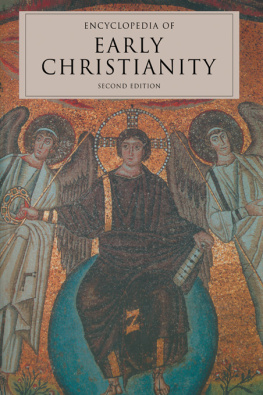Encyclopedia of Plague and Pestilence, Fourth Edition
Copyright 2021 by George Childs Kohn; fourth edition updated by William E. Burns
All rights reserved. No part of this publication may be reproduced or utilized in any form or by any means, electronic or mechanical, including photocopying, recording, or by any information storage or retrieval systems, without permission in writing from the publisher. For more information, contact:
Facts On File
An imprint of Infobase
132 West 31st Street
New York NY 10001
ISBN 978-1-64693-769-1
You can find Facts On File on the World Wide Web
at http://www.infobase.com
Entries
Afghan cholera epidemics
Cholera outbreaks of varying intensity that affected Afghanistan in the 1930s and 1940s, originating almost always in India (the two countries shared a common border until the creation of Pakistan in 1947). The first outbreak began in July 1930 in the Kabul River valley. The towns of Kabul, Jalalabad, and Charikar were soon infected. The disease spread south to Ghazni, where 160 cases were reported over two days. By August 1930, it had arrived in Kandahar and Makur Kalat, where it was particularly virulent; the epidemic subsided the following month.
During 193637, outbreaks of cholera occurred, but details about them are scanty or not available. In 1938, however, Afghanistan reported a large epidemic. The infection was evidently introduced into the country by nomadic tribes from the area of the future Pakistan and traveled rapidly from Afghanistan's southern province in June through the eastern provinces to attack the capital, Kabul, in November. Official Afghan reports listed 3,855 cholera cases from June to December 1938. The fatality rate was 56 percent, with 2,141 persons dying from the disease in 1938. The government launched a massive immunization program at the time, and almost 500,000 people were inoculated in the eastern region.
Nonetheless, epidemic cholera reappeared in Afghanistan in 1939. Officials, uncertain where it began, watched the disease move through the province of Kandahar to Seistan in the southwest and then to Herat in the north. Details of individual outbreaks are not known; officially, 849 cholera deaths were recorded in 1939. Two years later, there were minor outbreaks, mainly in southern Afghanistan; in 1946, officials recorded 35 cholera cases and 12 deaths from this acute intestinal disease in the Gardez and Orgun districts.
The government tried to establish and enforce quarantine regulations along Afghanistan's eastern border; it failed because of the difficulty in anticipating and controlling the movement of nomadic tribes, whose members were often responsible for transmitting the infection from one place to another. Visitors from a country where cholera was endemic were required to produce proof of immunization, as were Muslim pilgrims bound for the shrine of Mazar-i-Sharif, in the north. Immunization was also enforced in Afghanistan when an outbreak threatened.
Further Information
Pollitzer, Cholera; Simmons et al., Global Epidemiology.
Entry Author: Kohn, George Childs.
Afghan influenza epidemic
Brief but severe visitation of the Spanish Influenza Pandemic of 191719 that struck Afghanistan in the fall of 1918. Little is known about how or where the outbreak first began, but it apparently peaked about the same time as did the epidemic in northern India.
Influenza was first observed in Kabul (Afghanistan's capital) in early October 1918; over the next fortnight, the disease spread quickly throughout the city, affecting an estimated 80 percent of the people. Initially, the case fatality rate was not noticeably high, but in the third week of October, it mounted rapidly; some 60 to 80 persons reportedly perished from influenza in and around Kabul every day, and nearly 100 deaths occurred each day during the last 10 days of October.
The epidemic continued to spread throughout Afghanistan with shocking virulence until the end of the first week of November 1918. Afterward, having infected much of the population, influenza disappeared as quickly as it had arrived. About 10,000 persons were reported to have died from the flu in Kabul and the vicinity in the four weeks ending November 8, 1918.
Further Information
Reports on Public Health and Medical Subjects, No. 4.
Entry Author: Kohn, George Childs.
Afghan smallpox epidemic
Series of smallpox outbreaks over a three-year period in Afghanistan, which led to increased government support for the World Health Organizationsponsored smallpox surveillance and eradication program. During the course of the epidemic, Afghan travelers and pilgrims directly and indirectly spread smallpox to Iran, Iraq, Syria, and eventually Yugoslavia.
In 1970, 21 of Afghanistan's 28 provinces reported 1,044 cases of smallpox in 83 separate outbreaks. Of these, 156 cases (15 percent of the total) were reported from Kabul's (the capital city's) poorer areas, and the incidence of smallpox was rising. At least five of the outbreaks occurred within the confines of the Infectious Diseases Hospital in Kabul. Alarmed, the Afghan authorities swung into action and launched an intensive vaccination campaign in the city during the winter of 197071.
The number of outbreaks increased to 107 in 1971, but actual smallpox cases declined to 736. The following year, the number of outbreaks and cases fell sharply, with only 11 provinces reporting any incidence. In the first six months of the year, 10 provinces reported 196 cases in 39 outbreaks. After June 1972, smallpox incidence was detected only in the southern provinces of Oruzgan, Kandahar, and Zabul. In September, the last indigenous cases were reported from Oruzgan. Later that year, Zabul reported one outbreak and Kandahar two outbreaks, but upon investigation these were found to have been imported from Pakistan. The surveillance and eradication strategy launched by the World Health Organization thus appeared to have achieved its objective within a span of 36 months.
Further Information
Fenner et al., Smallpox and Its Eradication.
Entry Author: Kohn, George Childs.
African and Asian conjunctivitis pandemic
Extensive pandemic of acute hemorrhagic conjunctivitis (AHC) that began in Africa and spread throughout Asia and to parts of Europe between 1969 and 1971. Known by a variety of names, including Apollo 11 disease, Bangla Joy disease, Singapore epidemic conjunctivitis, picornavirus epidemic conjunctivitis, and epidemic hemorrhagic conjunctivitis, AHC affected millions of people during and after this pandemic. After a 24-hour incubation period, the virus causes congestion, swelling, watering, and pain in the eyes. Subconjunctival hemorrhage is the most distinctive symptom. The cornea can be affected, but rarely in a serious way. Recovery is rapid and usually begins by the third day in treated cases unless there are complications. During the pandemic, a new enteroviruslater designated as enterovirus type 70 (E70)was isolated as the main causative agent.
The pandemic reportedly began in an eastern suburb of Accra, the capital of Ghana in West Africa, in June 1969. From September 1969 to February 1970, it spread like wildfire along the coast to Nigeria, Cameroon, and the Ivory Coast. Togo, Dahomey (Benin), Liberia, and Sierra Leone were infected between February and June 1970, Gambia in October, and Senegal between September and December 1970. The epidemic peaked in Morocco (137,991 cases were treated) during December 1970January 1971 before spreading to Algeria, Tunisia (February), Kenya (the disease arrived by sea in April 1971 and infected a coastal city and then Nairobi in late 1971 and early 1972), and Libya (summer of 1971). There were unconfirmed reports of an AHC epidemic in the United Arab Republic (Egypt and Syria) during 197172, but the earliest recorded epidemics there occurred in 197273.











